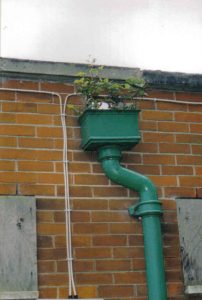Building information manual
For most large re-roofing or new-roofing projects, a file of information should be provided to the building owner on completion of the works. Known as the Health & Safety file, or O&M Manual, it should contain information on the design, specification and construction of the roof, as well as any information needed to ensure health and safety during any subsequent work, such as maintenance, cleaning, refurbishment or demolition. Information on the following should be considered for inclusion:
- A set of “as built” drawings.
- Specification of all materials used and their supplier.
- List of designers and contractors responsible.
- Statement of the proposed use of the building and the psychrometric conditions assumed, together with calculations of the roof’s thermal performance.
- Records of all inspections and tests carried out prior to handover.
- A copy of any warranties and guarantees, including any terms and conditions.
- Advice on the recommended frequency of inspections and procedures for care and maintenance.
- Information on health and safety aspects of installed components.
Inspections
BS6229:2018 (Flat roofs with continuously supported flexible waterproof coverings) contains a section on inspection & maintenance, which says that-
“A flat roof should be inspected at least twice yearly; in autumn to ensure it is clear of leaves, dirt and debris, outlets are not blocked and the roof is free draining; in spring to discover and rectify any damage due to weather. Green, blue and other specialist roofs should be inspected in accordance with the designer’s original inspection plan”.
It also recommends that additional inspections should be carried out in the event of extreme weather conditions, vandalism, and construction work on or adjacent to the roof, including the installation of equipment (e.g. HAV or Air-conditioning plant, telecoms equipment or solar power generation modules). Also, where there are many trees around the roof, or it is in a particularly leafy area, more frequent inspections may be necessary.
Where flat roof refurbishment coverings have been specified by a manufacturer there will often be a warranty in place, and the terms of the warranty will normally require that inspection and maintenance are carried out at set intervals, according to their instructions. Additionally, many warranties require that such records must be maintained and be available for viewing by the manufacturer or their representatives.
Inspections should include the following elements:
- Examination of ceilings for signs of water penetration or condensation followed by examination of external walls, eaves and soffits for signs of movement.
- The roof should then be inspected for any signs of damage to, or displacement of, the individual layers of construction including, as appropriate, the waterproof layer, the thermal insulation, any Water Retaining Layer, the surface protection and flashings.
- The location and extent of any build-up of leaves, moss, plants or debris should be recorded.
- Mountings of roof top installations such as safety barriers, fall arrest posts, harness bolts and satellite dishes should be examined to ensure their attachment remains waterproof.


Routine Maintenance procedures
Maintenance of a flat roof should involve:
- Removal of all accumulated leaves, dirt and debris. Some mineral surface bitumen membranes can shed excess mineral for a while after installation and will accumulate in gutters and around outlets. This should be cleared away.
- Clearance of rainwater outlets, downpipes and gutters. Ensure gratings over outlets or gutters are clear.
- Replacement of any surface protection which has been dislodged or removed.
It is usually advisable to cut back overhanging branches to reduce leaf fall onto the roof, and to renew mortar or mastic pointing at the top of upstands or counter flashings. Attention to the pointing of such terminations is important as this is the critical, and exposed, interface between a roof and the building.



Repair/renewal
Should inspection discover the need for repair or replacement of any part of the roof, the work should be undertaken as soon as possible but only after appraisal of the original roof design and assessment of the need for modification or improvement.
Repairs should be undertaken using materials compatible with the original work and, if still under an original guarantee, by the original installer. Where the roof has a manufacturer warranty, the manufacturer should be consulted regarding the specification of the remedial work, and to ensure liaison with the original installer of their system. Failure to observe this process can violate the manufacturer warranty.
All works of inspection, repair and renewal should be recorded in the owner’s building information manual.
Safety
In order to carry out the aforementioned inspection and maintenance works, operatives will require safe access to the roof. Ideally there would be internal access to the roof and guardrails around perimeters. However, where these are not present trained and competent operators should be employed to access the roof safely and set up safe inspection practices while on the roof. These practices will vary from job to job, and according to the risk assessment for the works, and experienced roofing contractors can provide valuable advice in this regard.
References;
BS6229:2018 (Flat roofs with continuously supported flexible waterproof coverings)
CDM Regulations 2015
